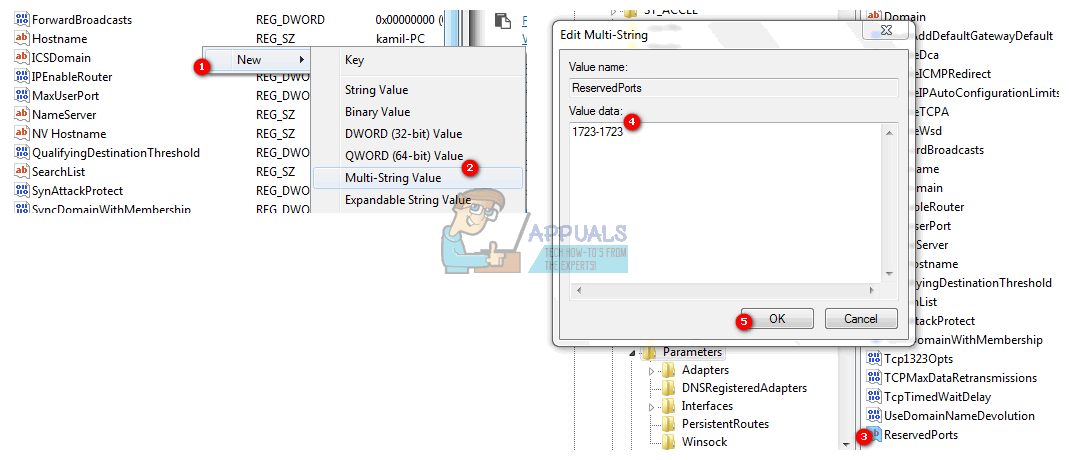The error message that users affected by this issue see when trying to connect to the internet reads something along the lines of: In many cases, this issue arises following an occurrence that changes the affected computer’s settings and preferences (such as a Windows update or upgrade). There are quite a few different causes of this problem, with the most common ones being an issue with the drivers of the device being used to connect to the internet or the same TCP port that the device is trying to connect to the internet through being used by another program or device. If you are experiencing this problem, the first thing you should do is unplug or turn off the internet device you are using, restart your computer, wait for your computer to boot up, plug in or turn on the internet device and try to connect to the internet to see whether or not the problem persists. If the problem persists, the following are the most effective solutions that you can use to try and fix it:
Solution 1: Install any and all irrelevant internet device programs
Many internet modems or other internet devices come with some kind of software that you are required to install on your computer. If you have any such programs or applications installed on your computer (apart from any that are required by the internet modem or device you are currently using), you need to uninstall them. To do so, simply: Once done, restart your computer and check to see whether or not the issue has been resolved.
Solution 2: Disable and then re-enable your network connection
Solution 3: Update your network adapter’s drivers
If your computer finds updated drivers for your network adapter, it will automatically download and install them. Once that’s done, you can try accessing the internet and see whether or not the problem has been fixed.
Solution 4: Uninstall (and then reinstall) your network adapter
Solution 5: Explicitly reserve the TCP port that your internet device uses
If you are experiencing this problem because the TCP port that your internet device is trying to use to connect you to the internet is being used by another device or program, you can simply reserve the specific TCP port for your internet device, prohibiting anything else from using it. To do so, you need to: HKEY_LOCAL_MACHINE > SYSTEM > CurrentControlSet > services > Tcpip
As soon as the computer boots up, check to see whether or not the fix worked.
Solution 6: Determine what process is using the TCP port in question and end it
taskkill /PID PID /F When the computer boots up, the offending program should start using a TCP port other than 1723, leaving TCP port 1723 open for your internet device and effectively fixing this problem for you and restoring your access to the internet.
Solution 7: Perform a System Restore
If all else fails, you still have one last resort – performing a System Restore to a point in time when your computer was not affected by this issue. For this to work, you are going to need a system restore point that was created before your computer fell victim to this issue, but if you have that you should be golden. You should also note that performing a system restore is going to automatically get rid of any programs/updates you installed or data you saved on your computer after the creation of the system restore point you are restoring your computer to. If you do not know how to perform a System Restore on a Windows computer, consult the Restoring the System using System Restore Point section of this guide.
How to Fix ‘The Local Device Name is Already in Use’ Error on WindowsHow to Unlock Huawei Modem and Pocket WiFi DevicesQualcomm Snapdragon 865 Mobile Processor With Integrated 5G Modem Specifications…What is the Difference Between a Router and a Modem?


